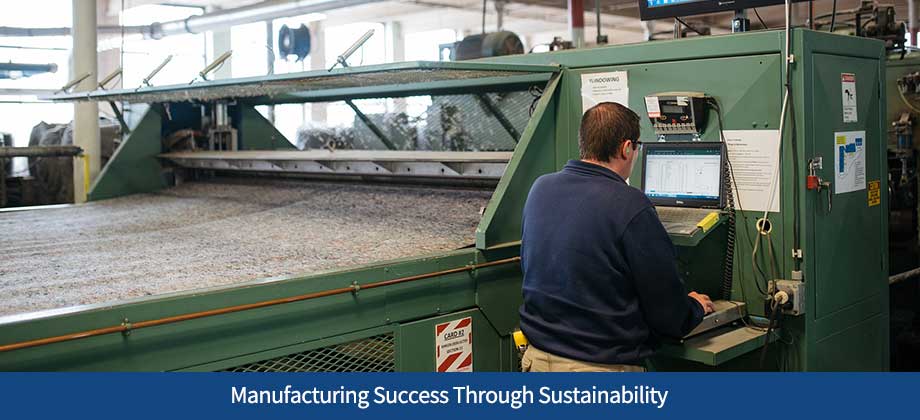Manufacturing Success Through Sustainability

It wasn’t too long ago that consumers didn’t think twice about sustainability. Lower costs and higher convenience outweighed any notion that the environment could be negatively impacted by the goods and services they were purchasing. But today, the conversation has shifted in a significant way. As reported in an article from Forbes, “Just two years ago, only 58% of consumers across all generations were willing to spend more for sustainable options. Today, nearly 90% of Gen X consumers said that they would be willing to spend an extra 10% or more for sustainable products, compared to just over 34% two years ago.” These numbers are why many companies have put a major focus on sustainability, and the manufacturing industry is no different. In order to remain competitive in the marketplace, manufacturers have got to begin treating sustainability practices as a critical business strategy.
The good news is that the technology available to manufacturers makes this practice even more feasible—and it can lead to huge returns.
Manufacturers are in a tricky spot when it comes to sustainability. They’re being asked to produce more goods at higher speeds for less money—but they’re also being pressured by the government and environmentally savvy consumers and investors to get on board the climate train. According to the Environmental Protection Agency (EPA), the U.S. manufacturing industry produces 24 percent of direct carbon emissions. That’s a steep and scary number to be responsible for, so clearly action needs to be taken to get it under control. How can manufacturers tackle the issue of global warming while simultaneously working to meet the demands of America’s consumers and shareholders? That’s where technology comes into play.
All Eyes on Hyperautomation
Hyperautomation, the practice of automating standard business processes like production chains and workflows through artificial intelligence (AI), machine learning (ML), and robotic process automation (RPA). The key benefits of hyperautomation mainly revolve around reducing the need for human involvement; creating a more digitally-focused business model; and allowing companies to be more fluid—meaning they can quickly adapt to change, which was a critical component when we were unexpectedly crippled by the COVID-19 pandemic.
To ease any trepidation, the goal of hyperautomation is surely not to eliminate the role humans play in manufacturing. Instead, hyperautomation aims to free these folks up to focus on more complex tasks that automation and machines simply cannot perform. Hyperautomation aims to make traditionally siloed operations more transparent, predictable, and efficient. The reduction in operational costs – both at the company level and environmentally – is why there will be such a focus on this practice as a robust sustainability strategy.
The Circular Economy
If the aim is to reduce consumption, the circular economy is one of the best places to start. According to the EPA, “A circular economy keeps materials, products, and services in circulation for as long possible… A circular economy reduces material use, redesigns materials, products, and services to be less resource intensive, and recaptures “waste” as a resource to manufacture new materials and products.” The aim is to cut back on the raw materials we use to produce goods and recycle/reuse our resources at every turn. With the help of technologies such as digitization and hyperautomation, we’ll be able to access real-time data to determine the “what,” “where,” and “how much” of materials needed to produce goods.
Supply Chain Woes
While it’s true the pandemic was the cause of much of our supply chain disruptions over the last few years, there’s another not-so-surprising factor at play now: weather. Climate disasters can and do result in monetary damages that wind up in the billions. As the weather gets more extreme, manufacturers need to prepare for the potential for more supply chain chaos—between workers unable to get to their jobs and infrastructure damages that block supply routes. Weather conditions can halt production, increase costs, damage revenues, pose risks to employees, and can ultimately lead to shortages—which spells a lot of waste. By incorporating technologies that allow manufacturers to digitize their processes, they can take advantage of data that gives broader insights into the sourcing, movement, and delivery of items through the supply chain. So, if there is an extreme weather event predicted somewhere along a supply chain, manufacturers can quickly pivot to another solution without missing a beat.
In the long run, sustainability is not just good PR – it’s highly necessary for the survival of the industry. And with so many technologies and advances available to manufacturers, there’s no better time to increase the focus on sustainable business practices. The true secret to success in business might just lay in the hands of sustainability.

